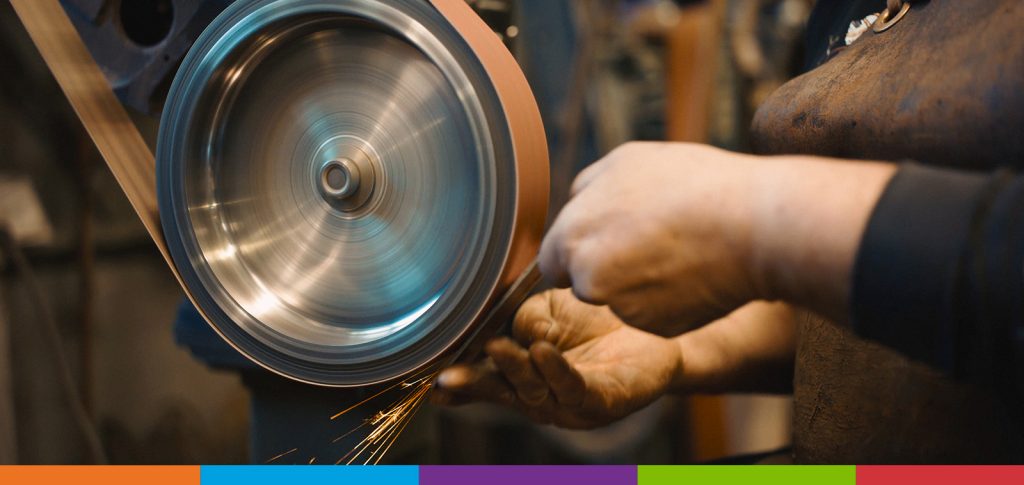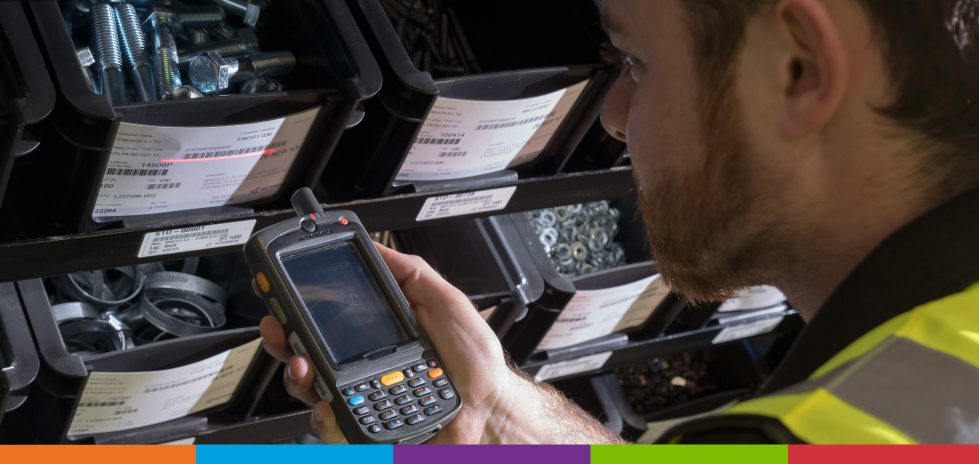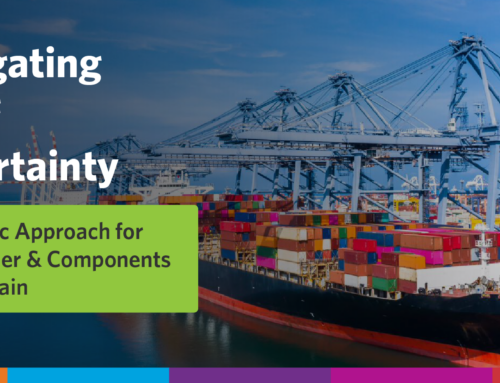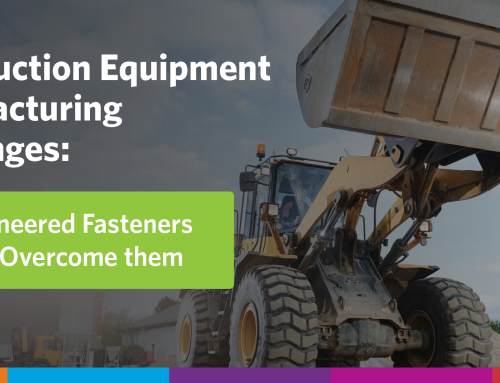
Bottom Line Solutions: Create a Win-Win Contract Experience
A healthy supply chain can help stabilize a business in even the most difficult economies. For many businesses, 2020 delivered a devastating blow to their bottom line by inserting a level of uncertainty into day-to-day operations that few had ever experienced. Many businesses faced new staffing and production challenges, as well as remote work requirements and additional safety protocols. Some companies encountered a never-before-seen demand while others saw demand crater and were overwhelmed by an inventory backlog.
Whether your business is booming, vulnerable, or you’re hanging on by a thread, making good decisions about your bottom line can accelerate growth and inject certainty back into your operations.
“Manufacturers are always looking for ways to increase their bottom line by finding and eliminating deficiencies in the supply chain. And this has never been more true or relevant than in the past year,” says Jim Japczyk, Chief Financial Officer for Optimas.
There’s no quick fix to re-strengthening the supply chain. It will take time and not every company will come out better, but for those that do, it can start by reaffirming the trust of your suppliers and your customers.
- Are your contracts as healthy as they could be?
- Do they invoke a sense of trust in your new and existing partnerships?
- Can you sign on the dotted line knowing it’s a win-win opportunity?
“Contracts provide an extra boost of certainty in business — an enterprise where you really want certainty,” Japczyk advises. “The less you have to worry, the better. And if you can extend that certainty, that trust, beyond your business and into the supply chain, that benefits everybody. You never want to be the reason a customer’s production line goes down and a healthy, well-intentioned contract can go a long way in ensuring everything runs smoothly.”
What’s the difference between a contract you could regret on Day 1 and a contract that allows for all parties to be well-represented?
Rebecca “Riv” Goldman is Senior Vice President and General Counsel for Optimas and responsible for streamlining our contracting process while reducing risk. As she suggests, “in a lot of ways, contracts are just contracts. They are legally enforceable pieces of paper. What elevates a partnership is often what you and your future partners do in the lead-up to signing the contract and how you communicate once the contract has been signed.”
The team here at Optimas has accumulated decades of experience in all types of business partnerships along the parts supply chain and we are confident that our experience can assist your business in crafting a contract all parties are comfortable with. While there aren’t many “secrets” behind contracts, the best ones work to include fairness and understanding to all parties.
Here’s how your next contract — and all the ones that follow — can become your best contract.
Enter Contract Negotiations with Your Eyes Wide Open
Not every business will enter contract negotiations in the same place. In the wake of the pandemic, three new supply chain headaches arose and will likely affect future production and the relationships up and down your supply chain for years to come.
- The Orphaned Business: These businesses were left high and dry as suppliers went under. Depending on the company’s size, one broken link in the chain can shut down an entire production line. This can have catastrophic consequences in the short-term and potentially no long-term future to speak of.
- The Vulnerable Business: Now your business is the one scrambling. Instead of being left out in the cold by someone else, internal issues are causing you to hinder production for your customers. Whether it is processes, systems, efficiencies, talent, or financial, you’re no longer standing on solid ground and your partners are feeling it too.
- The Strong Business: Some businesses are doing as well or better during the pandemic than they were pre-2020. For them, it’s about pulling ahead of a struggling competitor, uncovering new opportunities, and solidifying a reputation as a trusted supply chain partner. The headache here becomes not doing enough and knowing you let a chance for growth slip through your fingers.
“Each of these headaches present a unique risk — but they also present opportunities for stronger, healthier contracts if you can identify the situation you and your partners are in,” explains Japczyk. “By understanding where each business is, you can craft a contract that helps everyone. That means communicating now and in the future is top priority.”
Get the Right People in Place
At Optimas, we advocate the importance of people as the backbone of any business effort and that includes the contract development process.
“Don’t think of the creation of a contract as a one-person job — due to its scope, it shouldn’t be, and due to its importance, you don’t want it to be,” says Goldman. “Contracts are like any other process in a business where you are going to want multiple eyes on it.”
Who you involve will depend on the size of your business and the intricacies of the contract. For most medium-sized businesses, this includes the executive team, the legal team, and the finance team. It may also incorporate sales and purchasing, operations, or engineering. If you have specific supply chain managers or other key personnel, they may also be involved.
Understand the Intangibles of a Win-Win Contract
Healthy contracts point to healthy businesses and the healthiest contracts are the ones that prioritize the needs of all parties.
“Much like any marriage, a contract between two businesses should allow this new partnership to be stronger than the sum of its parts,” offers Japczyk. “Contracts can help determine costs, price points, technologies, customer service, lead times, and capabilities. They can also help you respond to future unforeseen challenges that arise and, in the event the partnership does have to end, can help eliminate any hard feelings during the separation.”
Here are just a few of the intangible characteristics of healthy contracts:
- Fairness for all sides: You don’t need to insert some type of “gotcha” clause to have a winning contract. What you sign today will create a partnership you may rely on for years or more. Ensuring fairness for all parties eliminates a lot of potential bad feelings that haunt a partnership later.
- Anticipation of change: Circumstances change and what made a contract good when you signed it may not exist a few years later or after turnover in leadership. If the relationship has to end or if it just needs to be fixed, protections are built-in for everyone to exit the other side of a negotiation gracefully.
- Built-in boundaries: Think of those things that are sure to happen, but are outside the control of either party, such as the price of raw materials. Agree on a credible index. Then allow prices of parts to fluctuate consistent with changes in the index.
- Flexibility and an avenue for communication: Just because you’ve signed a contract, doesn’t mean you need to be locked into that specific agreement. So much of business is about adapting to change and your contracts should similarly reflect that. Write your contracts with the understanding that something down the road could impact it and provide a process for amending the agreement if necessary.
- Clarity: You shouldn’t have to have an MBA and 20 years of legal experience to decipher a contract. While contracts are legally enforceable, they should be written so that anyone from the C-suite and your legal team to other participants can clearly understand the agreement being made.
- Understood penalties and ramifications: Both parties benefit from knowing what can happen — and what either side can do — in the event someone strays from the agreement. It can range from a fine to a complete separation or it can require some level of renegotiation.
“Optimas has been focusing on these areas for all of our contract development efforts,” explains Goldman. “By building these intangibles into every contract, we — Optimas and all of our contract partners — start off in a better place and we usually stay in a better place. It’s not about winning the negotiation, it’s about creating a circumstance where all sides win and all sides can enjoy open communication and greater business success.”
Avoid the Obvious Red Flags
Most business leaders with a few years under their belt can recall a bad contract experience. It can leave a raw taste in your mouth, distrust in your mind, and even an unwillingness to pursue future partnerships that could benefit your business.
“Nobody wants to feel like they are being taken advantage of, feeling forced into some agreement, or regretting a decision down the road,” says Japczyk. “Sometimes bad contracts are because of things you can’t control, but a lot of times, I’ve found, it’s because one party ignored some obvious red flags from the start.”
Here are some common red flags — consider running for the hills, or at least communicating your concerns, if you find them in your next contract draft:
- Poor documentation: Failing to fully document the agreement between the supplier and the customer can be the precursor to future bad feelings. It is critical that each party understand what they owe to the other and what is expected by all involved.
- A maze of approvals: Contracts that include a lot of approvals for what should be regular steps can underscore an overly complex and infuriating agreement. Approvals take time and, rather than add any value, it can gum up the works and stall otherwise lucrative partnerships.
- Being asked to sign “unfinished” agreements: Contracts are legally enforceable and bad ones can ruin a company’s bottom line. Avoid any agreement that opens the door for future things to be added to a contract that already has your name on the dotted line.
Final Thoughts
No matter what part of the contract you are working on, a good negotiation only concludes when all sides are satisfied.
“Healthy contracts ensure both parties are treated fairly,” advises Japczyk. “It may sound cliché, but the best thing you can do is go into a contract negotiation with the original Golden Rule in mind. Do unto others as you want done unto you. When you construct a contract, aim to deliver one you’d still be happy to sign if you were in the other person’s shoes.”
Everyone wants to win when they sign a contract, but that doesn’t mean any side has to lose. Win-win contracts are the foundation for great supply chain partnerships and a benefit to your bottom line.
When you work alongside Optimas, you work with a team that believes in success for all through fairness for all — with many of our most successful supplier and customer relationships dating back an average of 20 years. Is today the beginning of your company’s next great business partnership? Start a conversation with our team and try us out!







